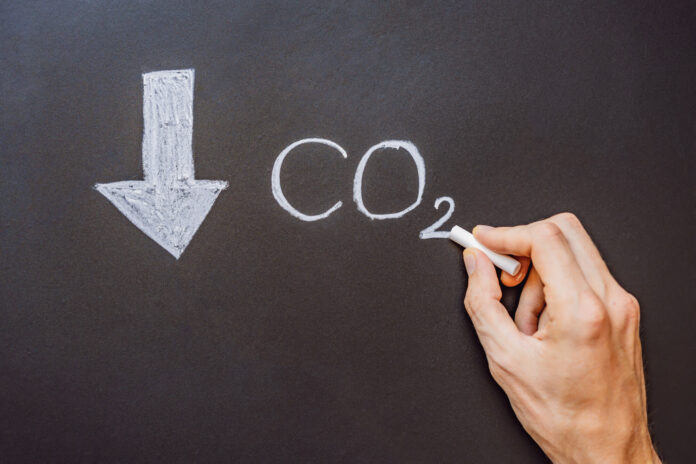Carbon monoxide is no doubt one of the most toxic of chemicals, it’s because of this that it’s become synonymous with the catchphrase ‘CO poisoning.’ According to the CDC, approximately 50,000 people in the U.S. visit the emergency department each year due to accidental CO poisoning.
This is because it is somewhat of a silent killer – you cannot smell, see, or taste carbon monoxide which makes it incredibly dangerous.
However, you may be surprised to discover that there is another form of carbon that you might have in your own home that is also a variety of carbon monoxide – dioxide, or ‘dioxide.’
And you might be wondering if there are any major differences between carbon monoxide vs dioxide. Well, we’re here to answer that very question so that you know the answer. So without further ado let’s dive into each one in-depth!
Understanding Carbon Monoxide vs Dioxide
Carbon monoxide and carbon dioxide are both gases that can be found in the Earth’s atmosphere. Both gases are colorless and odorless, but they are different in their chemical composition.
Carbon monoxide is made up of one carbon atom and one oxygen atom, while carbon dioxide is made up of two carbon atoms and two oxygen atoms. Carbon monoxide is poisonous to humans and can be deadly if inhaled in high concentrations.
Carbon dioxide is not poisonous and is actually required for human respiration. Plants also require carbon dioxide for photosynthesis.
Where Does Carbon Dioxide Come From?
There are two main types of carbon dioxide: fossil fuel CO2 and biological CO2. Fossil fuel CO2 comes from the burning of coal, oil, and natural gas. Biological CO2 comes from the respiration of plants and animals. Both types of CO2 are released into the atmosphere.
The Difference Between Carbon Monoxide and Carbon Dioxide
There are many differences between carbon monoxide and carbon dioxide, but the most important distinction is that carbon monoxide is poisonous. Inhaling carbon monoxide can cause serious health effects, including death.
Carbon dioxide, on the other hand, is not poisonous. It is a waste product of respiration and is released into the atmosphere. Although carbon dioxide is not poisonous, it is a greenhouse gas and can contribute to global warming.
The Dangers of Carbon Monoxide and Carbon Dioxide
Though both carbon monoxide and carbon dioxide are colorless and odorless gases, they are very different. Carbon monoxide is a toxic gas that can be fatal when inhaled, while carbon dioxide is not toxic.
Carbon monoxide is produced when fuels such as gas, oil, coal, or wood do not burn completely. It can build up in enclosed spaces and cause serious health problems or death.
Carbon dioxide is produced when we breathe and is also released when fuels are burned. It is not harmful in small amounts but can be dangerous in large amounts. High levels of carbon dioxide can cause suffocation.
While they may have different origins, both carbon monoxide gas and vapor are dangerous to human health. Inhaling either type of carbon monoxide can lead to serious health problems, including brain damage.
Symptoms of carbon monoxide poisoning include headache, dizziness, nausea, and shortness of breath. If you experience any of these symptoms, it is important to get to fresh air immediately and seek medical attention.
Protecting Yourself from Carbon Monoxide and Carbon Dioxide
Carbon monoxide binds to hemoglobin in the blood and prevents it from carrying oxygen to the body cells. This can lead to asphyxiation and death. Carbon dioxide is produced when we breathe and is exhaled out of the body.
It is also a greenhouse gas that contributes to climate change. To protect yourself from carbon monoxide, make sure to have working carbon monoxide detectors in your home and never use a gas appliance or car engine in an enclosed space.
To protect yourself from carbon dioxide, open windows and doors to get fresh air when you can and try to limit your time indoors.
What to Do if You Suspect Carbon Monoxide or Dioxide Poisoning
There are many steps that should be taken if you suspect that you or someone else is suffering from carbon monoxide (CO) or dioxide (CO2) poisoning. First, get to fresh air immediately and call 911.
Then, if you are able, open all the windows and doors to ventilate the area. If the person is not breathing, begin CPR. Lastly, be sure to seek medical attention even if symptoms seem to subside.
It is important to be vigilant about the possibility of poisoning, especially if you are using any type of fuel-burning appliance.
How Carbon Affects the Environment
There are a few key differences between carbon monoxide and dioxide. For one, carbon monoxide is a gas at room temperature, while carbon dioxide is solid. While both carbon monoxide and dioxide can have negative effects on the environment, carbon monoxide is generally considered to be more damaging.
This is because carbon monoxide can contribute to the formation of smog, which can cause respiratory problems in humans. Additionally, carbon monoxide can be absorbed by plants, reducing their ability to photosynthesize.
Carbon Dioxide vs. Carbon Monoxide Applications
There are significant differences between carbon monoxide and carbon dioxide, most notably in their applications.
It can be deadly if inhaled in large amounts, as it quickly replaces oxygen in the bloodstream and prevents the delivery of oxygen to the body’s vital organs.
Carbon dioxide, on the other hand, is a colorless, odorless gas that is produced naturally by the human body and is exhaled during respiration. It is also a by-product of the combustion of carbon-based fuels.
In small amounts, carbon dioxide is not harmful, but in large amounts, it can be dangerous as it can displace oxygen in enclosed spaces.
Using Gas Detectors to Measure Carbon Monoxide and Carbon Dioxide
When it comes to measuring gases like carbon monoxide (CO) and carbon dioxide (CO2), it is important to know which tool is best for the job. Gas detectors can be used to measure both CO and CO2 levels, but there are some important differences to keep in mind.
CO2 detectors are more common, and they measure the level of CO2 in the air. CO detectors, on the other hand, measure the level of CO in the air. Both types of detectors are important for safety.
But CO detectors are more important for monitoring CO levels in the home. CO2 detectors can be used to monitor CO2 levels in the home, but they are not as sensitive as CO detectors.
Carbon Removal Solutions
There are a few big differences between carbon monoxide and dioxide when it comes to carbon removal solutions. For one, carbon monoxide is significantly more reactive than carbon dioxide.
This means that it can bind to other molecules more easily, making it more effective at capturing carbon. Additionally, carbon monoxide is less stable than carbon dioxide, meaning that it breaks down more easily and can be removed from the atmosphere.
Finally, carbon monoxide is a much stronger greenhouse gas than carbon dioxide, making it more effective at trapping heat and contributing to climate change.
How to Prevent Carbon Monoxide Poisoning
Burning these materials in a confined space, with insufficient ventilation, produces dangerous levels of carbon monoxide. Many people are unaware of the dangers of carbon monoxide and how to prevent carbon monoxide poisoning.
The best way to prevent carbon monoxide poisoning is to ensure that all fuel-burning appliances are properly ventilated. This includes fireplaces, wood stoves, gas furnaces, water heaters, and space heaters.
When using fuel-burning appliances, always crack a window to allow fresh air to circulate. Do not use a gas stovetop or oven to heat your home.
Install a battery-operated or battery backup CO detector in your home and check or replace the battery when you change the time on your clocks each spring and fall.
Have your heating system, water heater, and any other gas, oil, or coal-burning appliances serviced by a qualified technician every year.
Do not use a generator, camp stove, or other gasoline or charcoal-burning device inside your home, basement, garage, or near a window.
The Future of Carbon Monoxide and Dioxide Control
There are many industrial and transportation processes that release carbon monoxide (CO) and carbon dioxide (CO2) into the atmosphere. CO and CO2 are both greenhouse gases (GHGs) that contribute to climate change. However, they have different effects on the atmosphere.
CO is a much more potent GHG than CO2, meaning that it can trap more heat in the atmosphere and contribute to global warming. CO2, on the other hand, is a major component of the Earth’s carbon cycle and is necessary for life on Earth.
Despite its importance, human activities have increased the amount of CO2 in the atmosphere, causing climate change.
Protect Your Family From the Dangers of Carbon Monoxide and Dioxide
In conclusion, carbon monoxide vs dioxide is a very different gas. Carbon monoxide is a gas that can be deadly, while carbon dioxide is a gas that is necessary for life.
If you think you may have been exposed to carbon monoxide, it is important to get medical help immediately.
Looking for more information like this? Feel free to explore the rest of our blog now.










